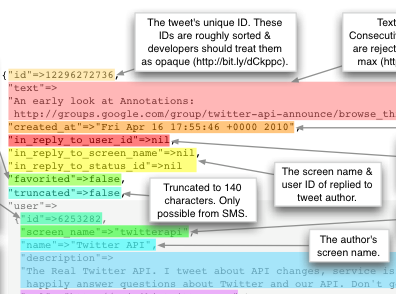Blogs
Scanners, a temporary used book / art installation
October 24, 2011 - 21:35 — philip.foecklerScanners, a temporary used book / art installation celebrates the dying business model of brick and mortar stores for one, and used book stores in particular.
"Millionaire Watch" - Countdown
October 24, 2011 - 12:14 — glushkoIn today's (Oct 24) lecture I mentioned the notion "material disclosure" - the requirement for public firms to reveal important information so that "insiders" don't have non-public information they can use to make money by buying or selling their stock. We also mentioned the 180 day "lockup" period after a company goes public during which employees can't sell stock, which has some of the same motivation. In today's Wall Street Journal there is a front page story about how a lot of luxury merchants in Silicon Valley are counting down the days to November 21, when LinkedIn's lo
The e-paper
October 24, 2011 - 10:29 — karthikvWhenever I go near Sproul Hall, I grab a copy of The Daily
Californian. I like reading papers I mean “physical” papers when compared to
digital papers. However this post not about my likes or dislikes it is about
the way information is organized on the digital medium. An e-paper gives an
enormous flexibility to organize information. If you visit the website you will
find the “News, Sports, A&E, Opinion, Multimedia and Blogs” categories.
BBC's Digital Media Initiative and challenges with describing multimedia resources
October 24, 2011 - 03:16 — kiranGetting Siri-ous about Ontologies.
October 23, 2011 - 22:25 — natarajanOriginal Article : http://www.unwiredview.com/2011/10/12/how-siri-on-iphone-4s-works-and-why-it’s-a-big-deal-apple’s-ai-tech-details-in-230-pages-of-patent-app/
Historypin, A New Tool for Digital Storytelling
October 23, 2011 - 19:30 — NatalieHistorypin, a collaboration between Google and the nonprofit We Are What We Do, is a dedicated space for people to build collections of photos and narratives throughout history. Photos are uploaded, credited, and contextualized (on the right side) and give different (or more flattened) perspectives of historical events, eras, and people. The site leverages a Google Maps API to crowdsource and present location data.
The Organization and Discovery of Music
October 17, 2011 - 22:00 — taeil2What's in a Tweet?
October 17, 2011 - 06:51 — gahernandez In his blog post about Twitter status objects, Raffi Krikorian, Director of Twitter's Application Services, breaks down the metadata stored in each and every tweet.
In his blog post about Twitter status objects, Raffi Krikorian, Director of Twitter's Application Services, breaks down the metadata stored in each and every tweet.
